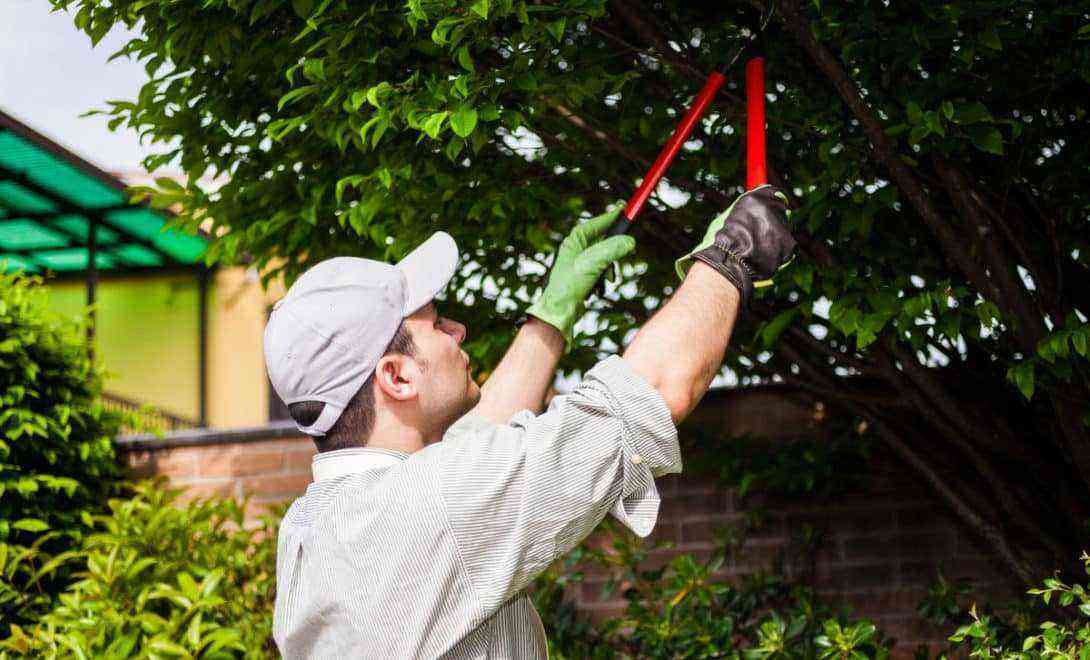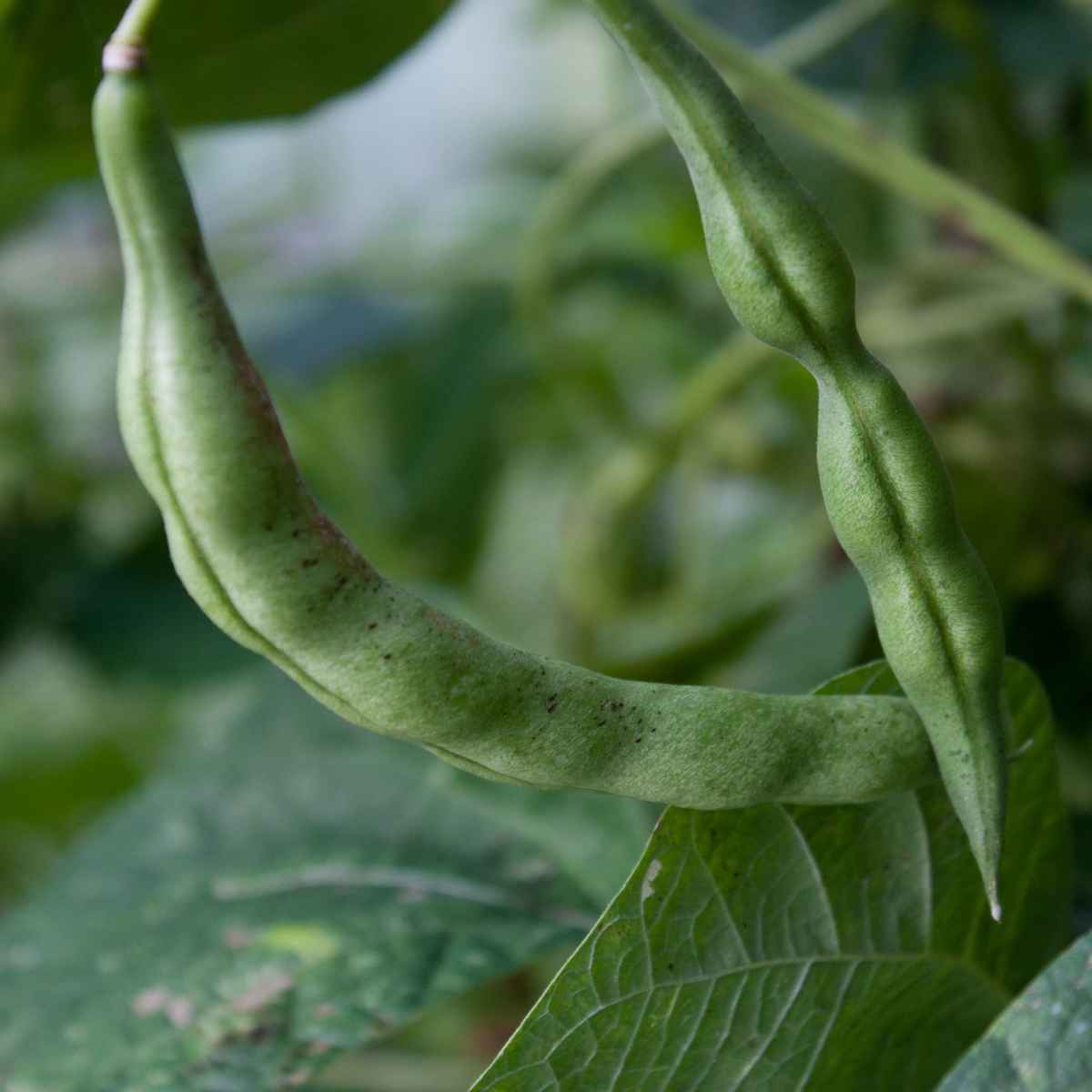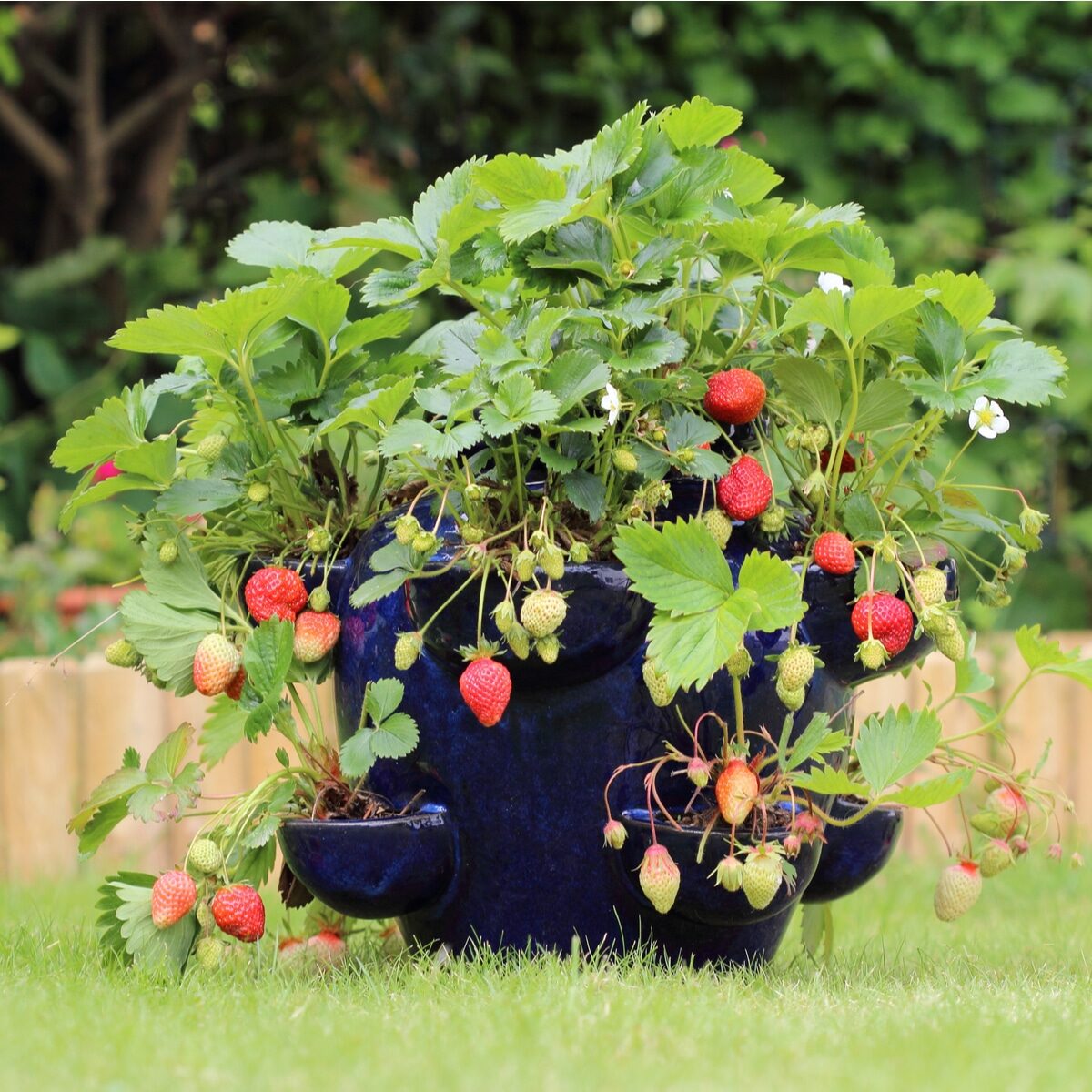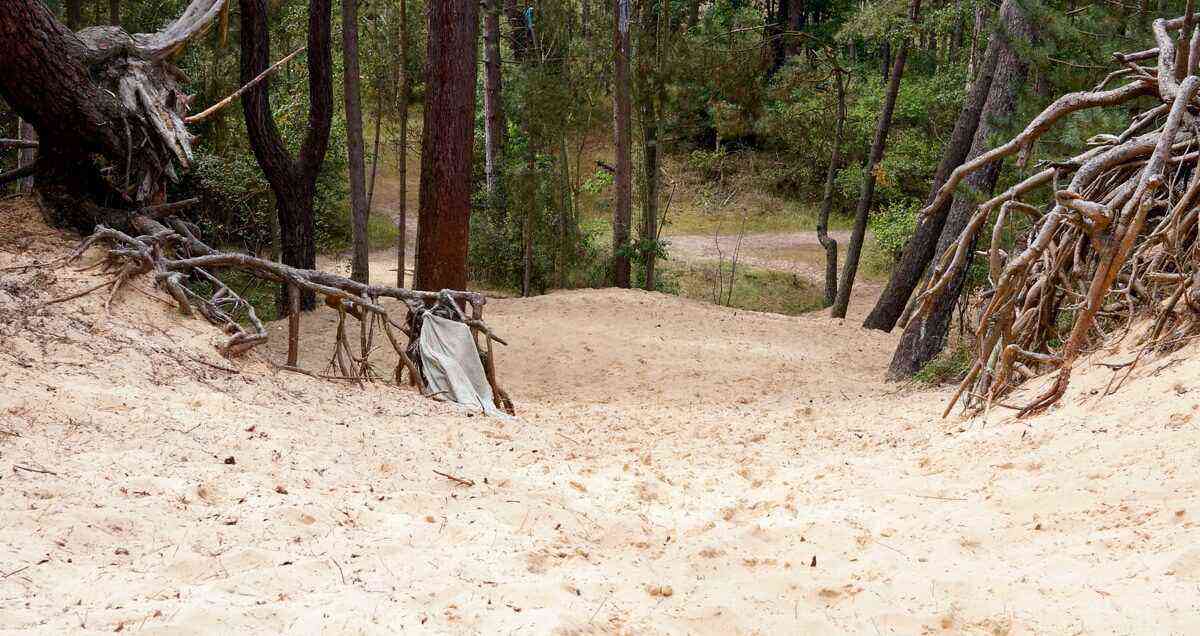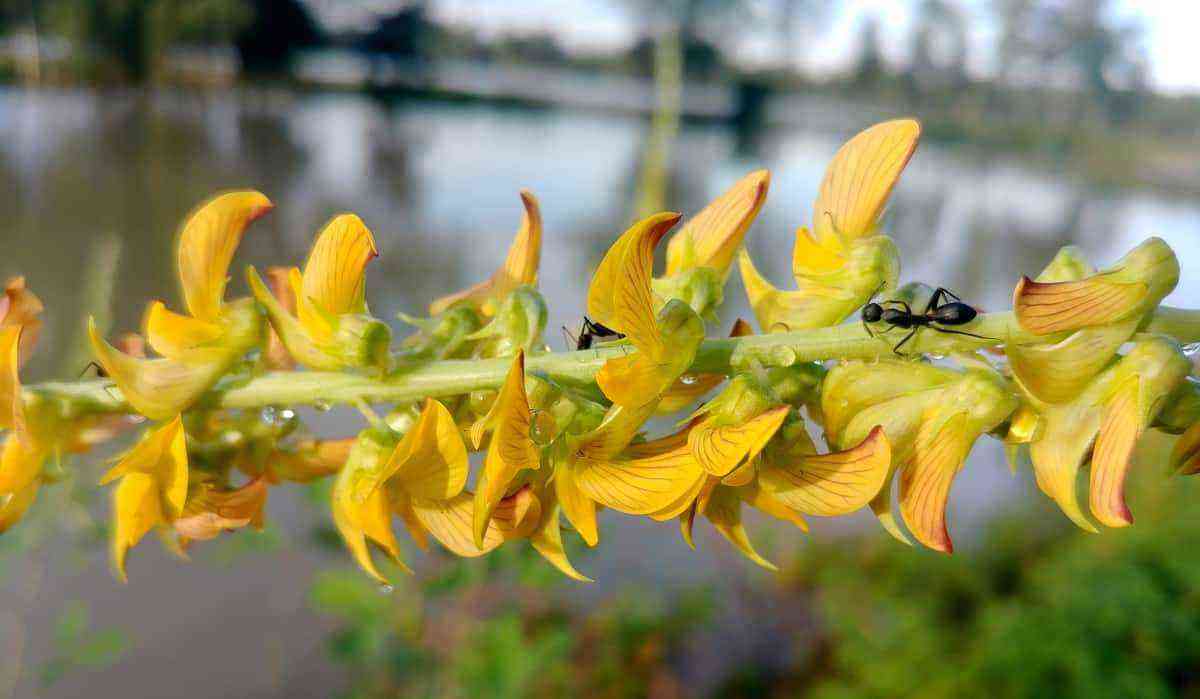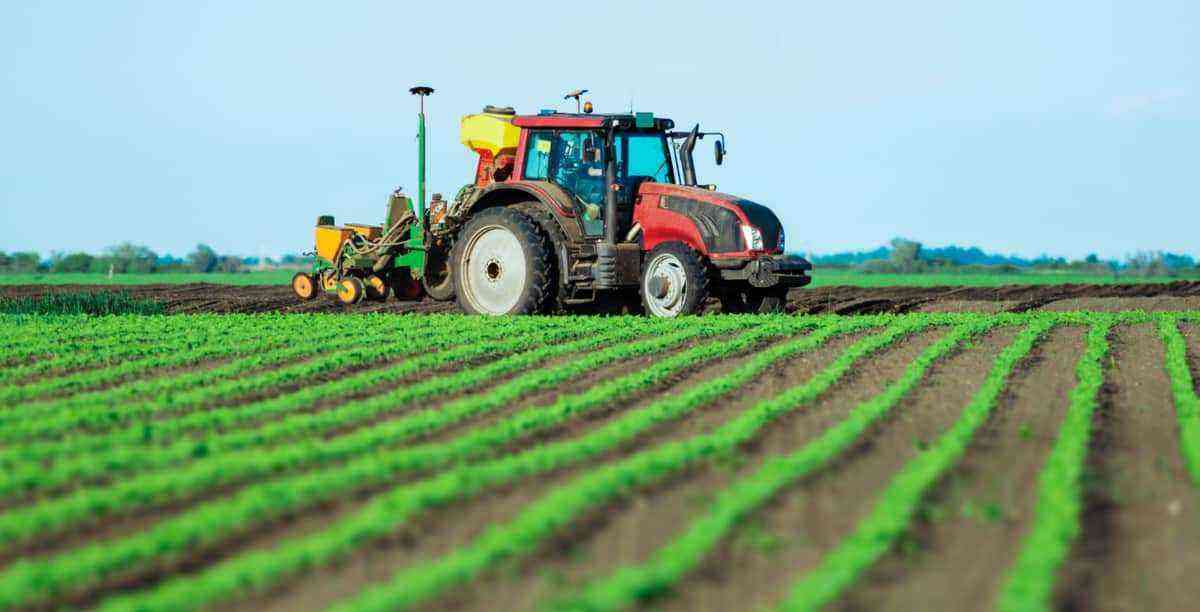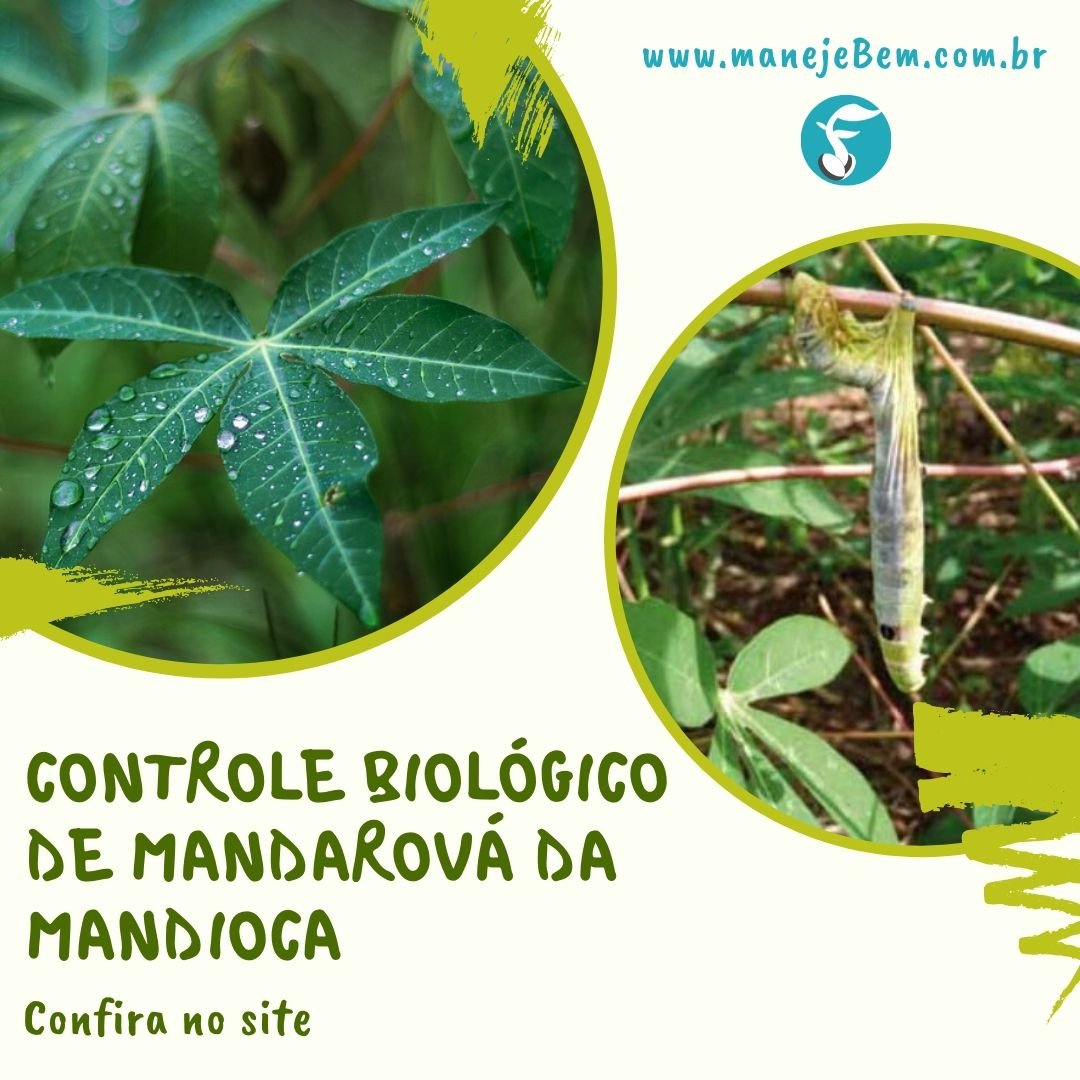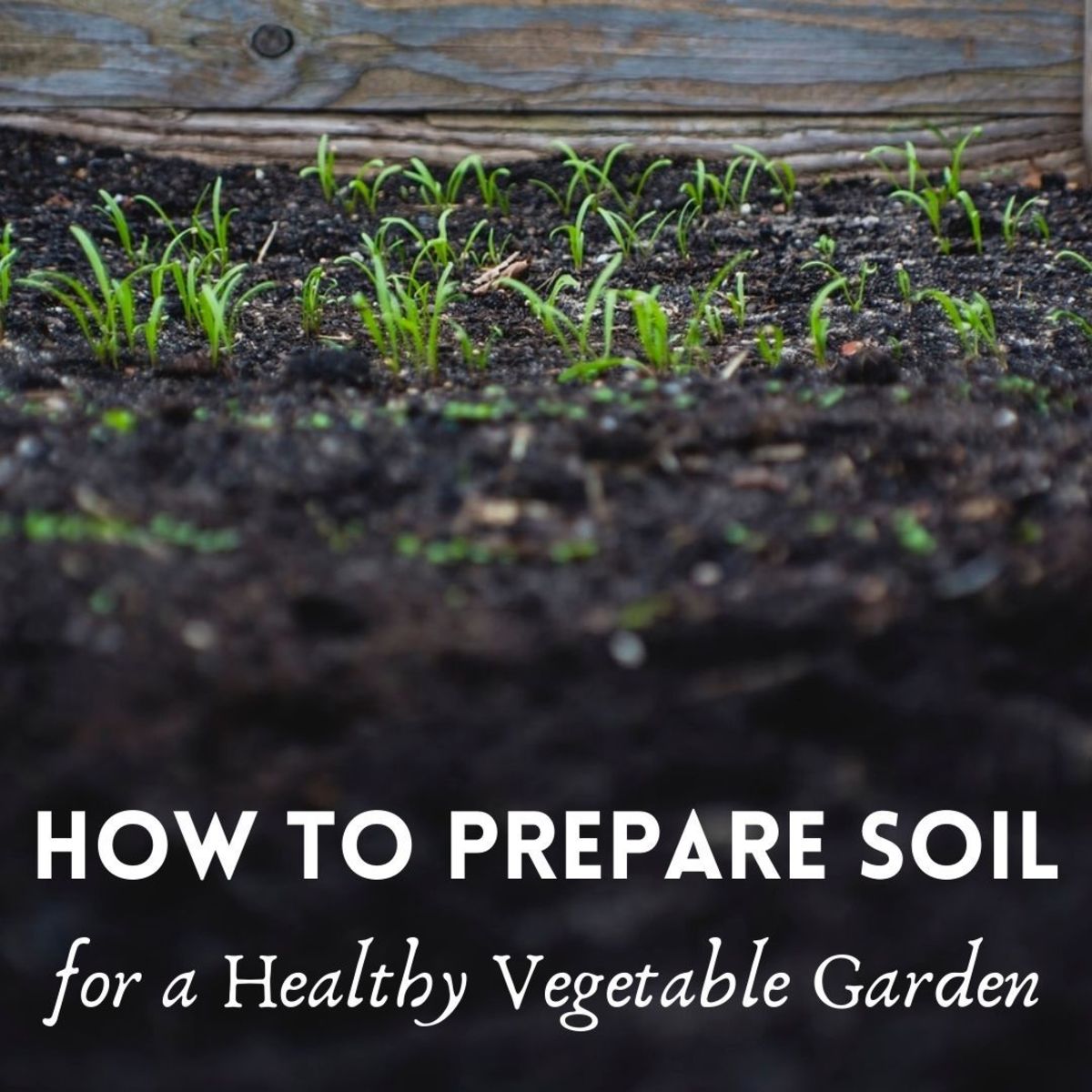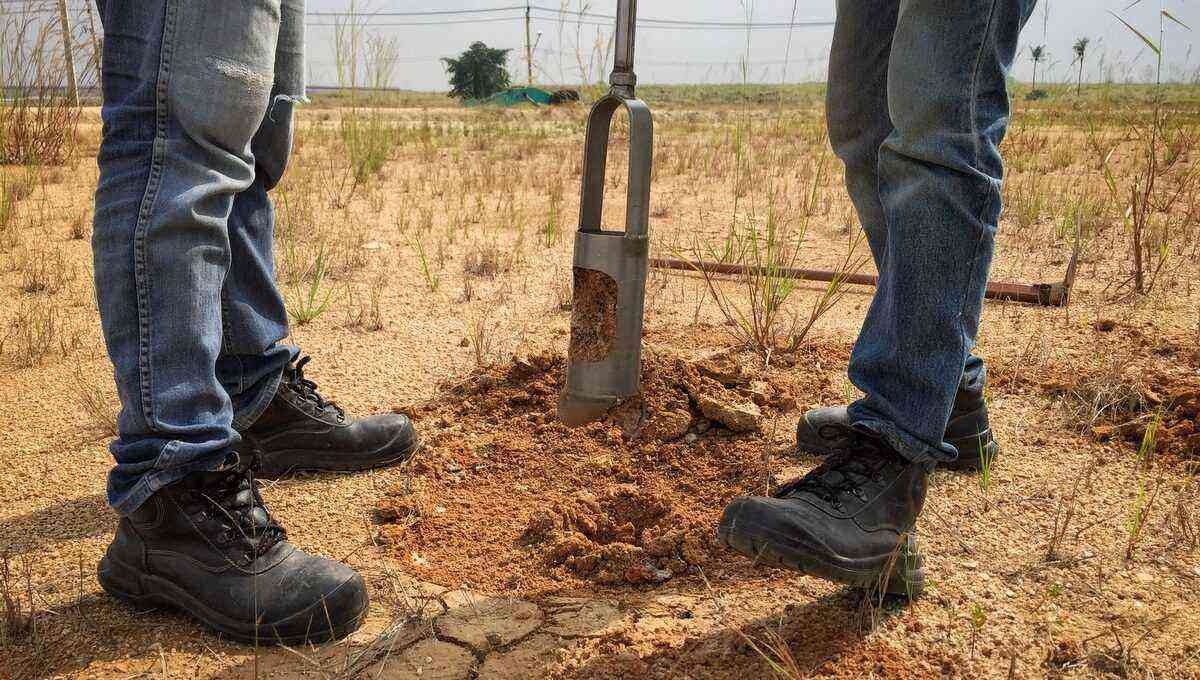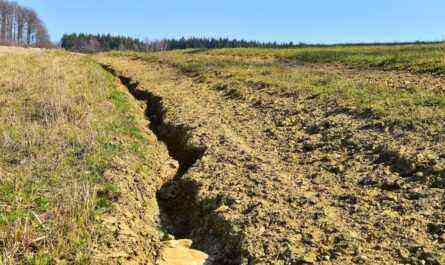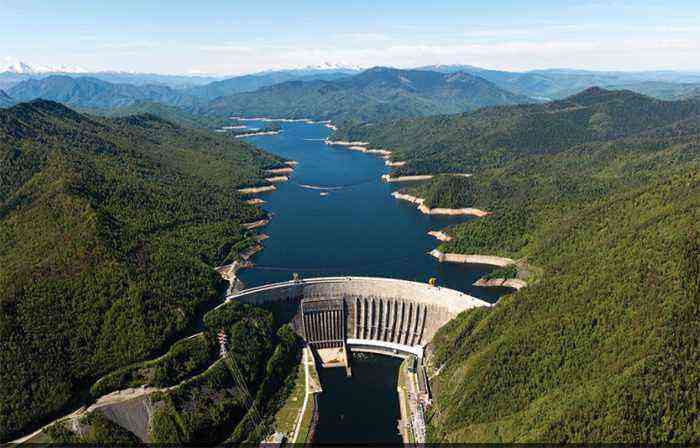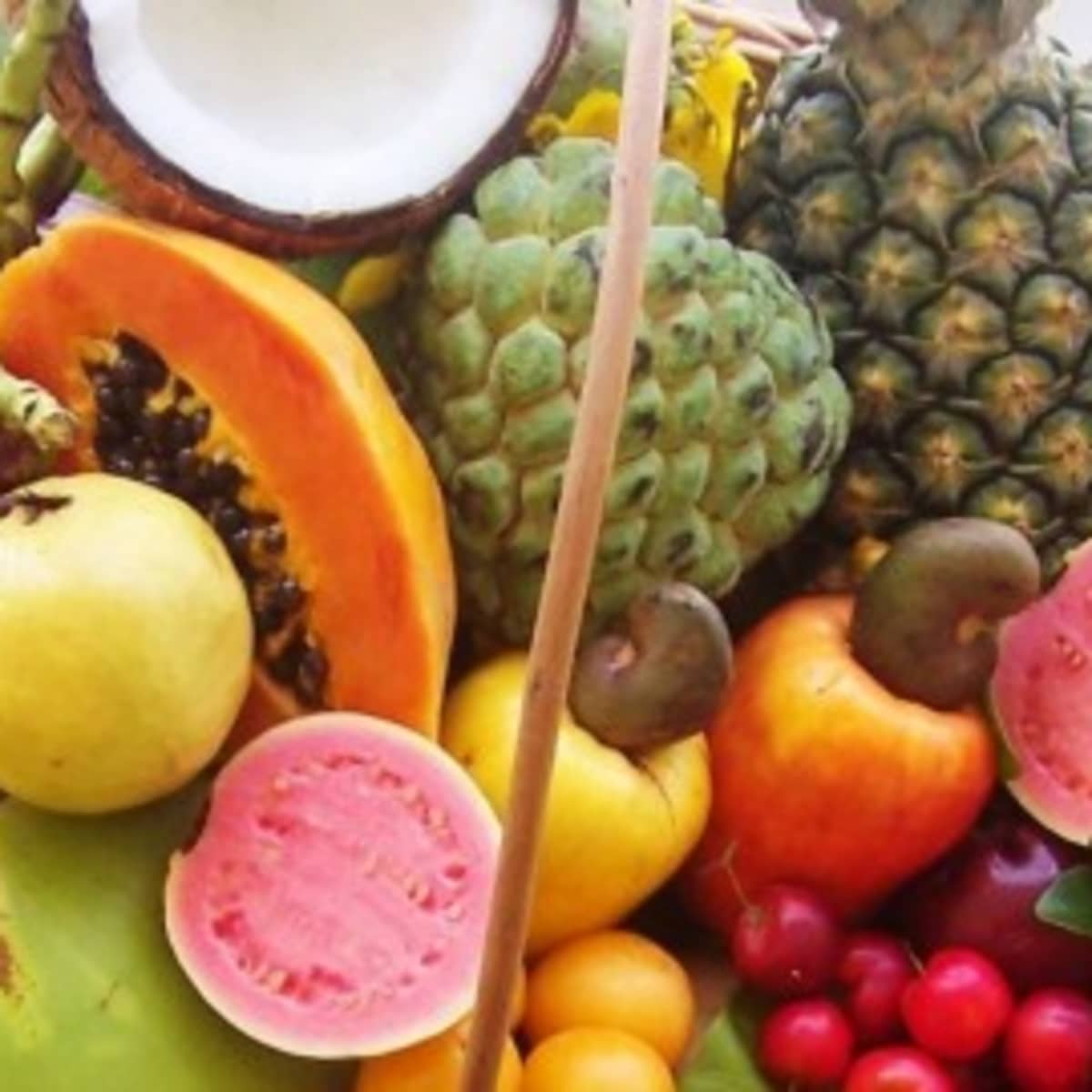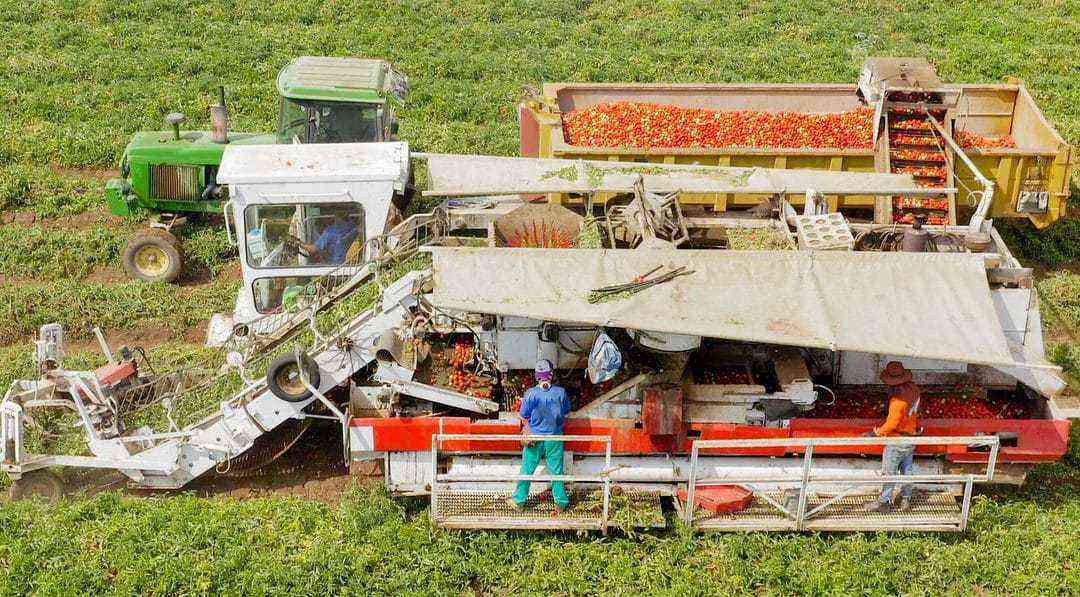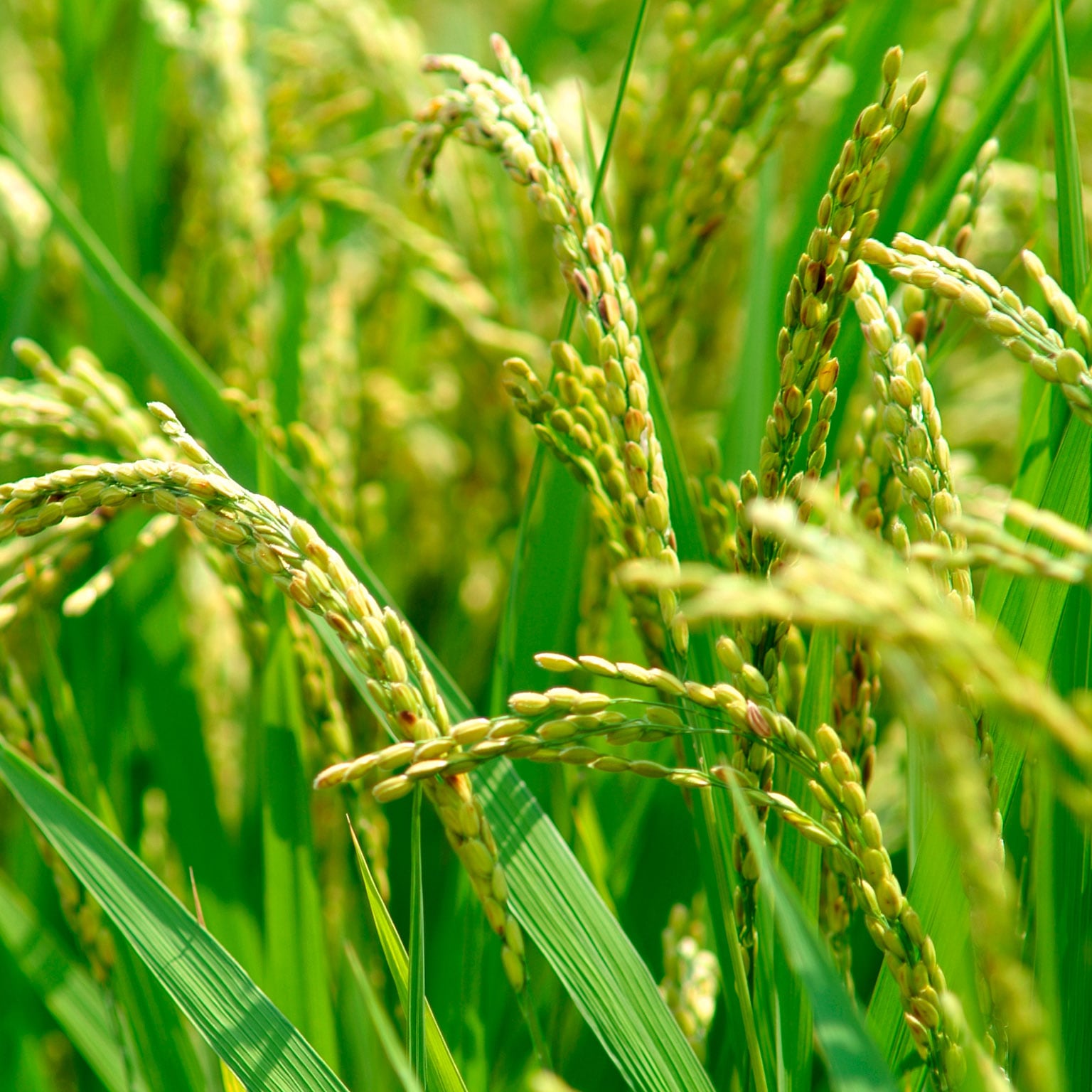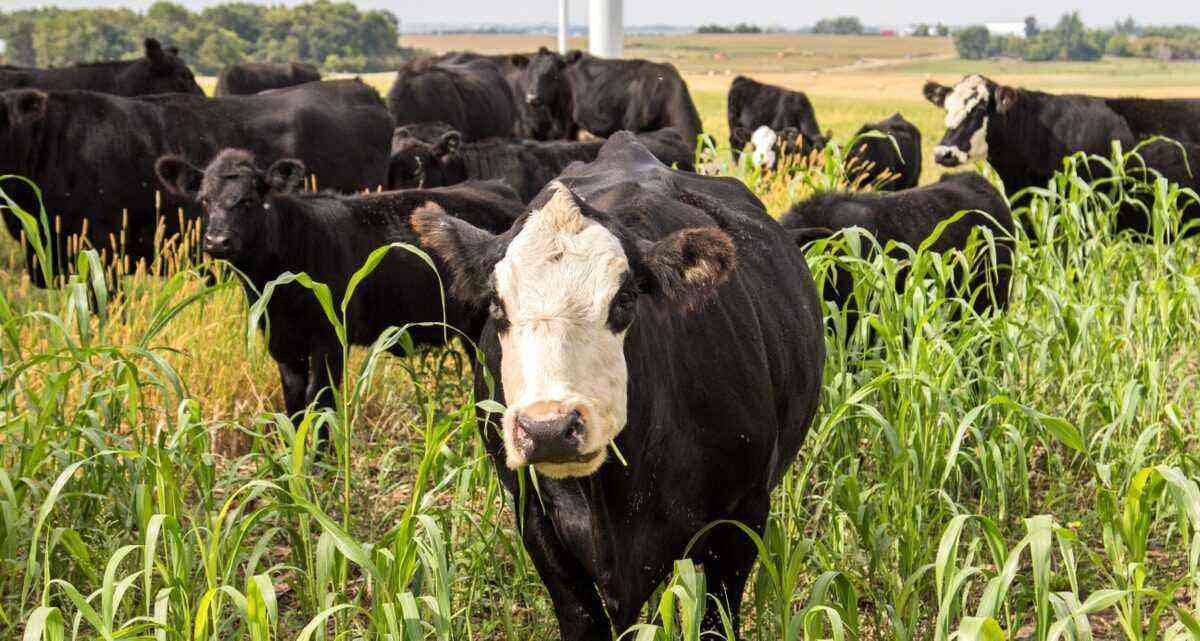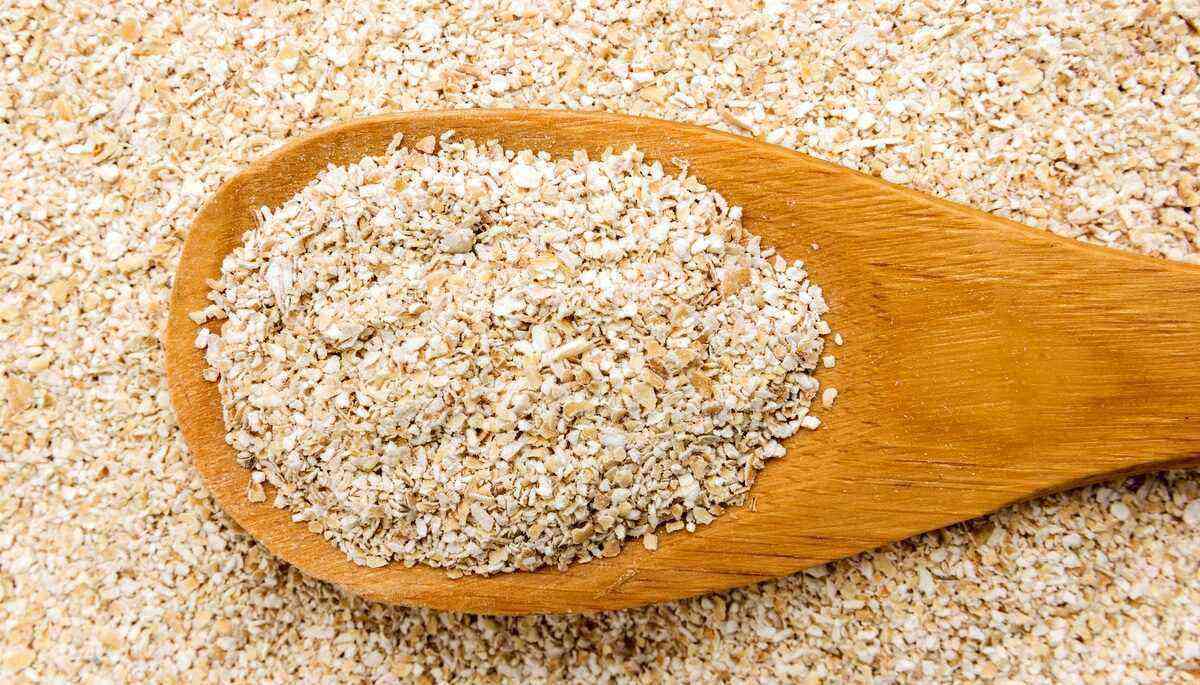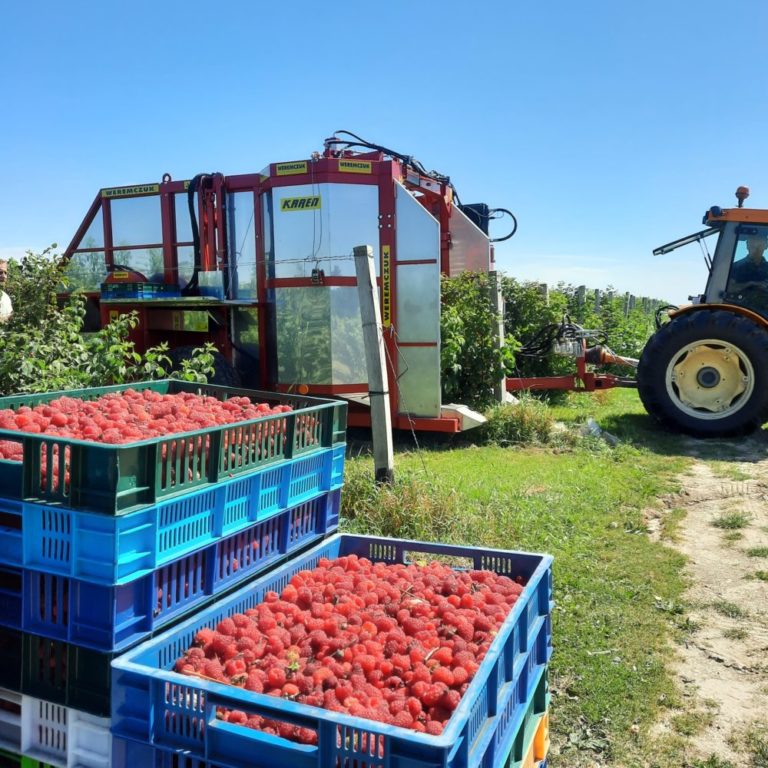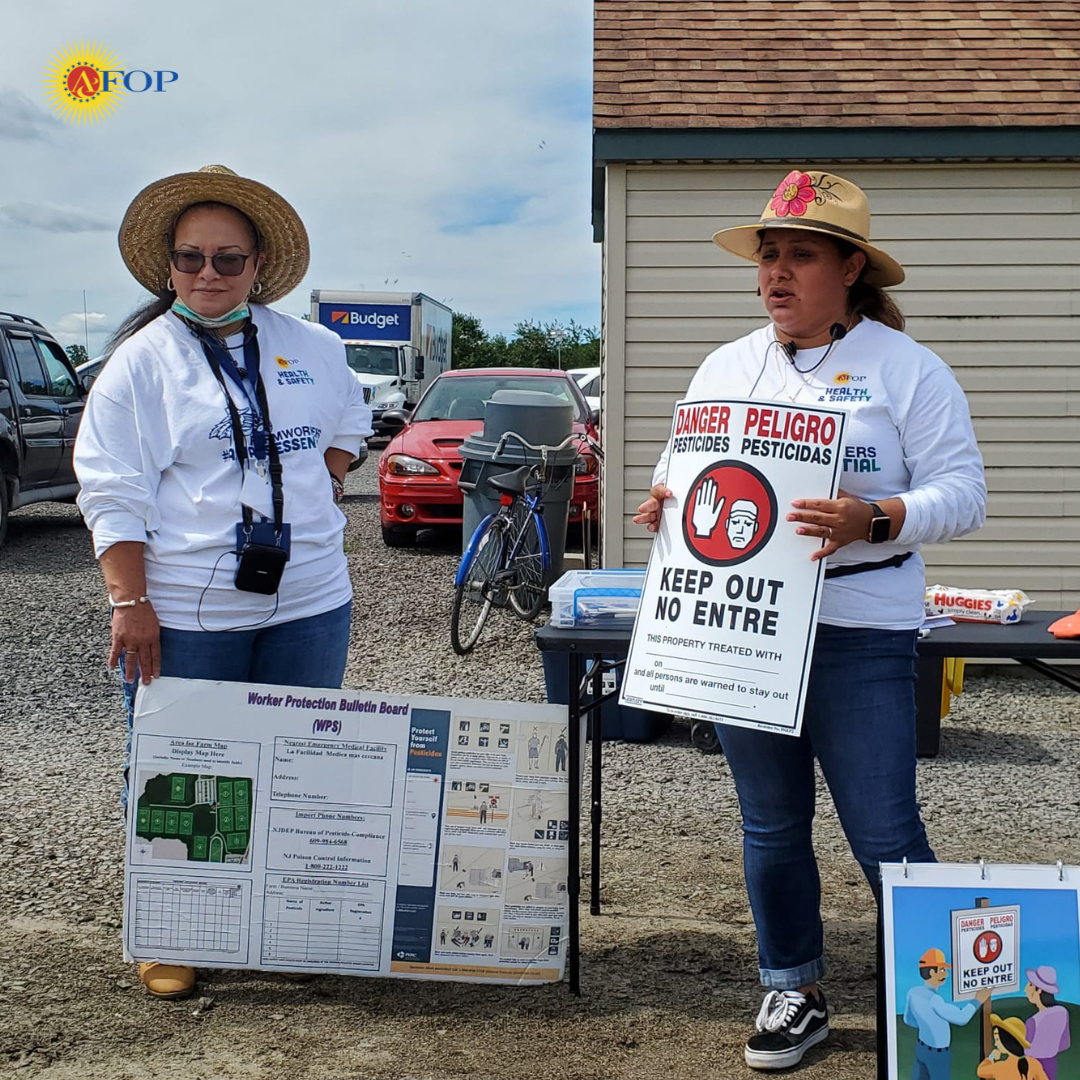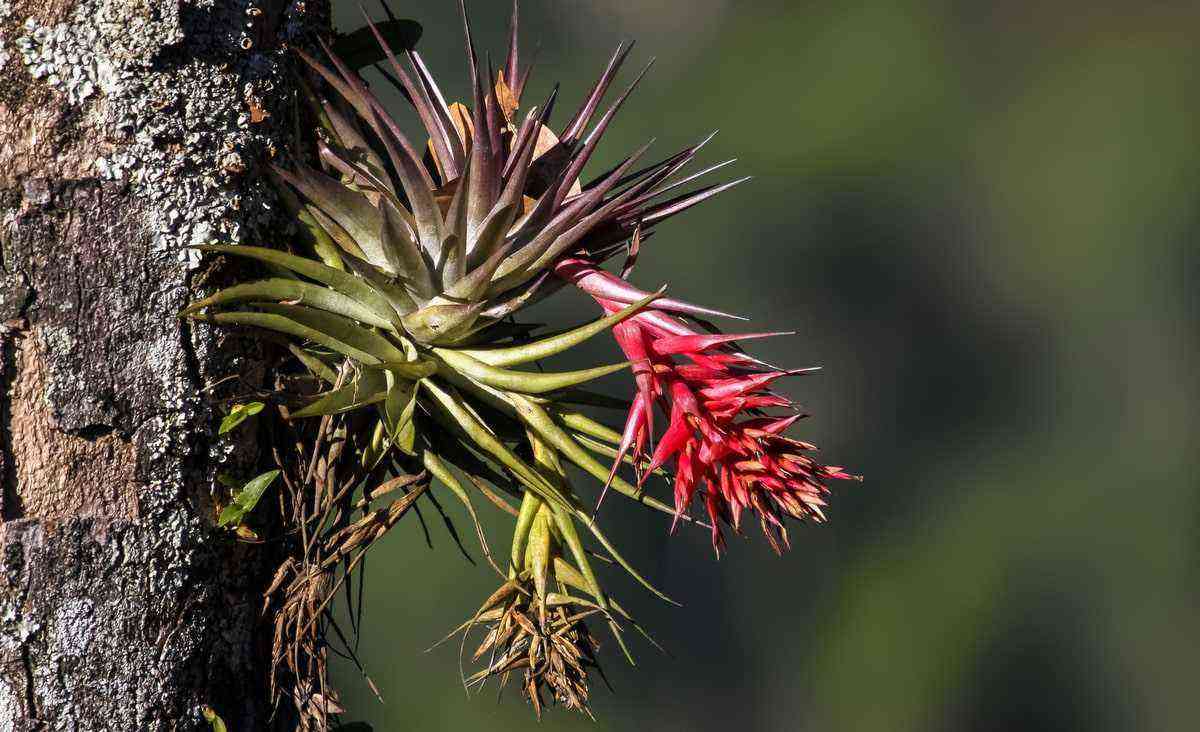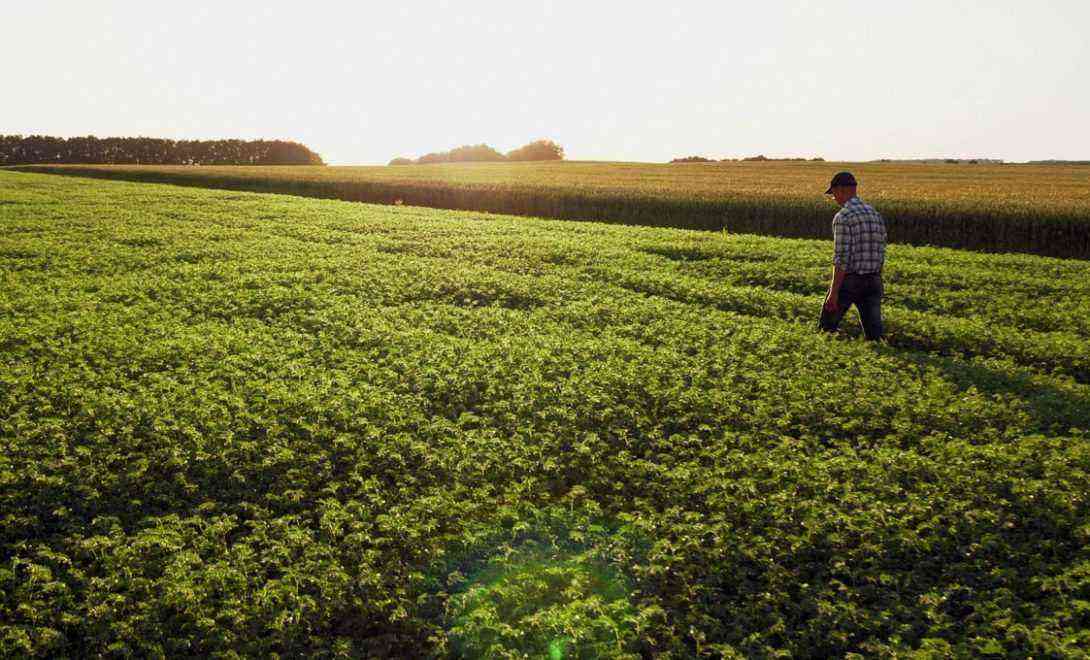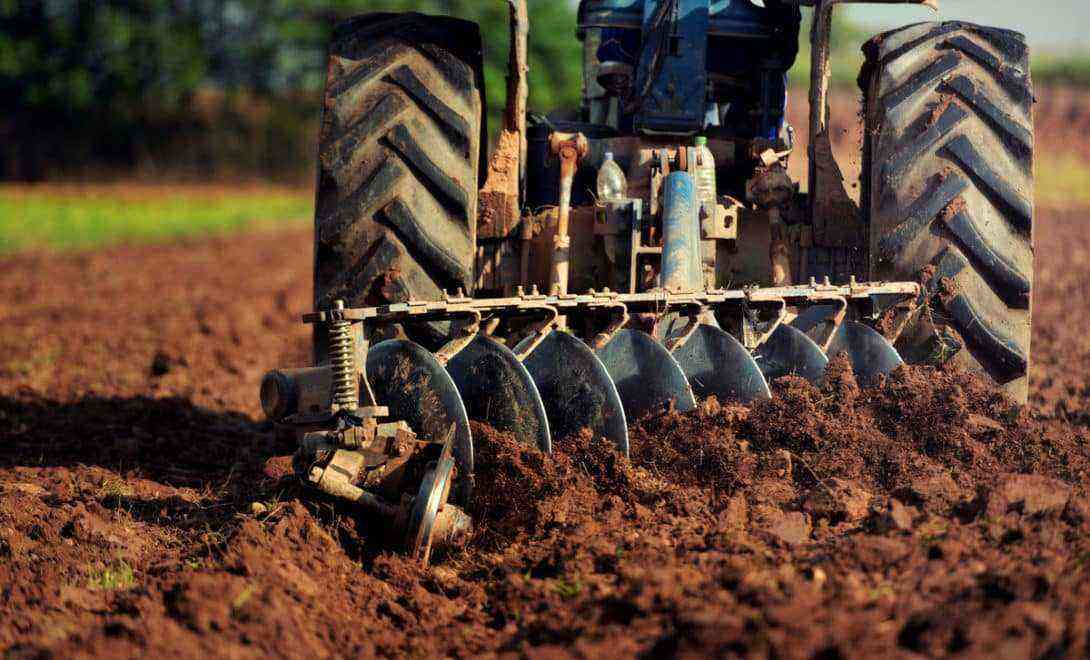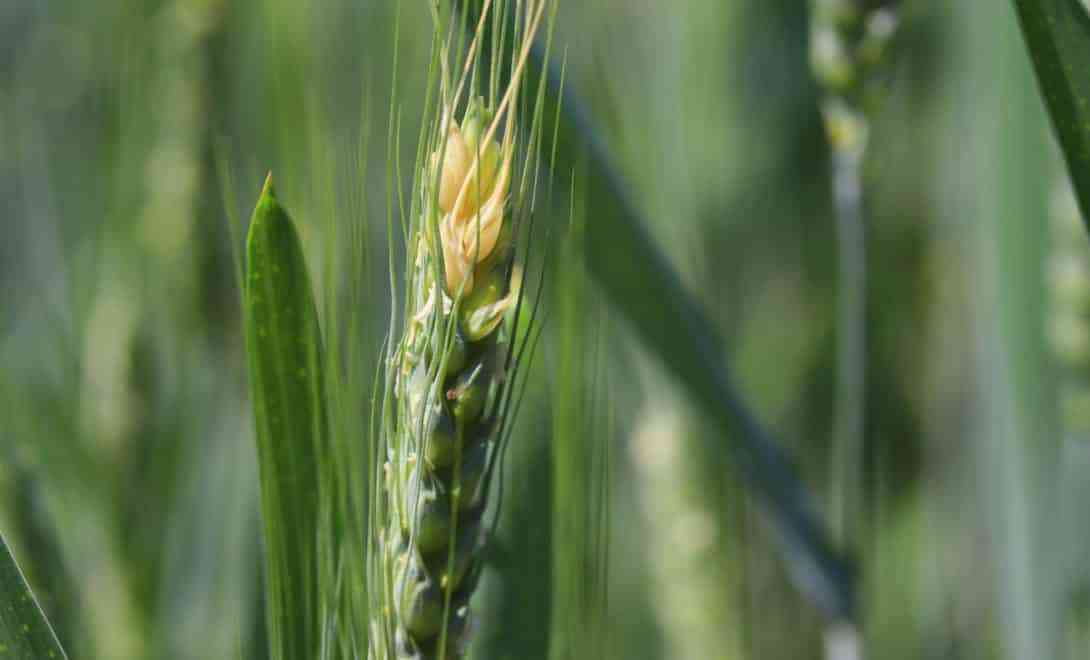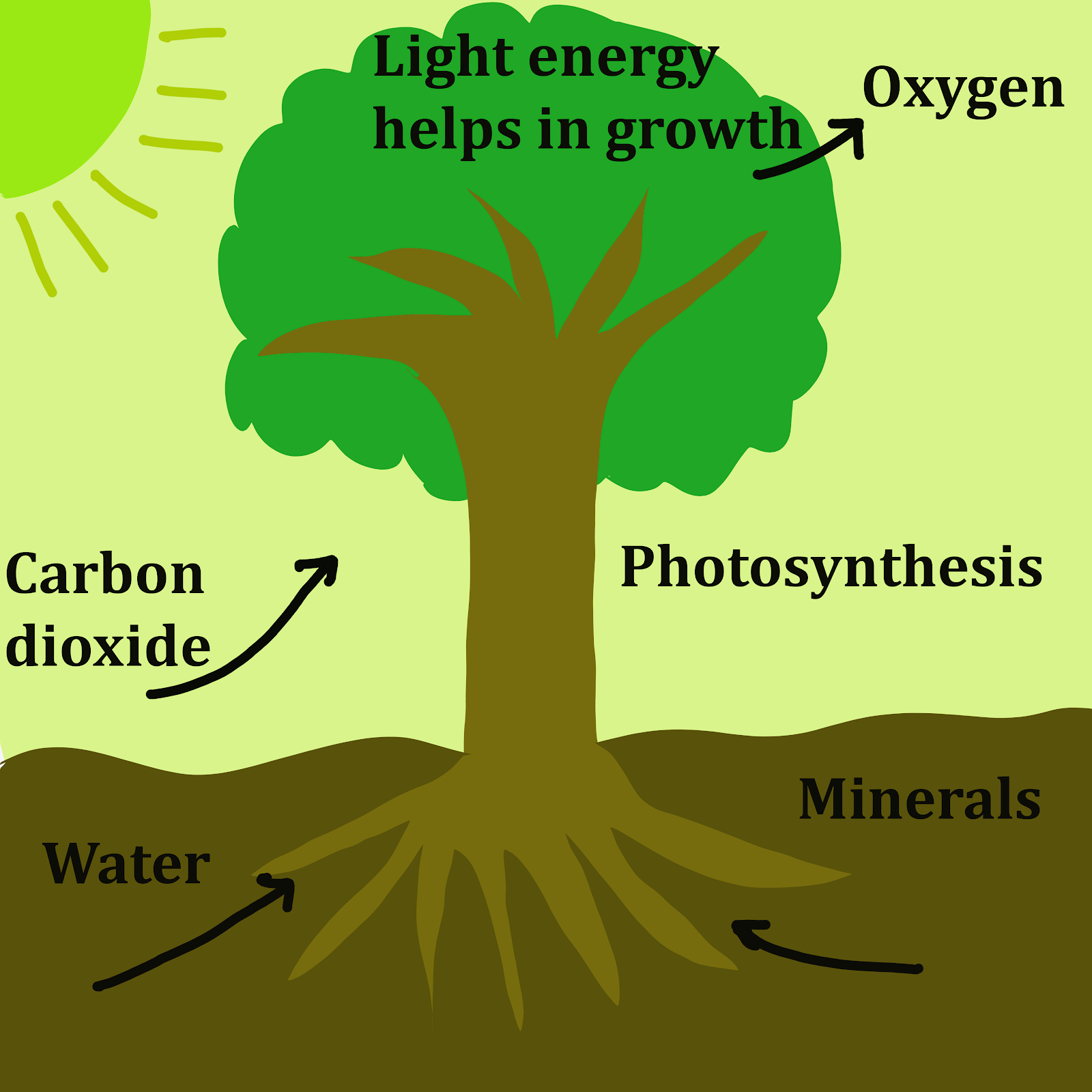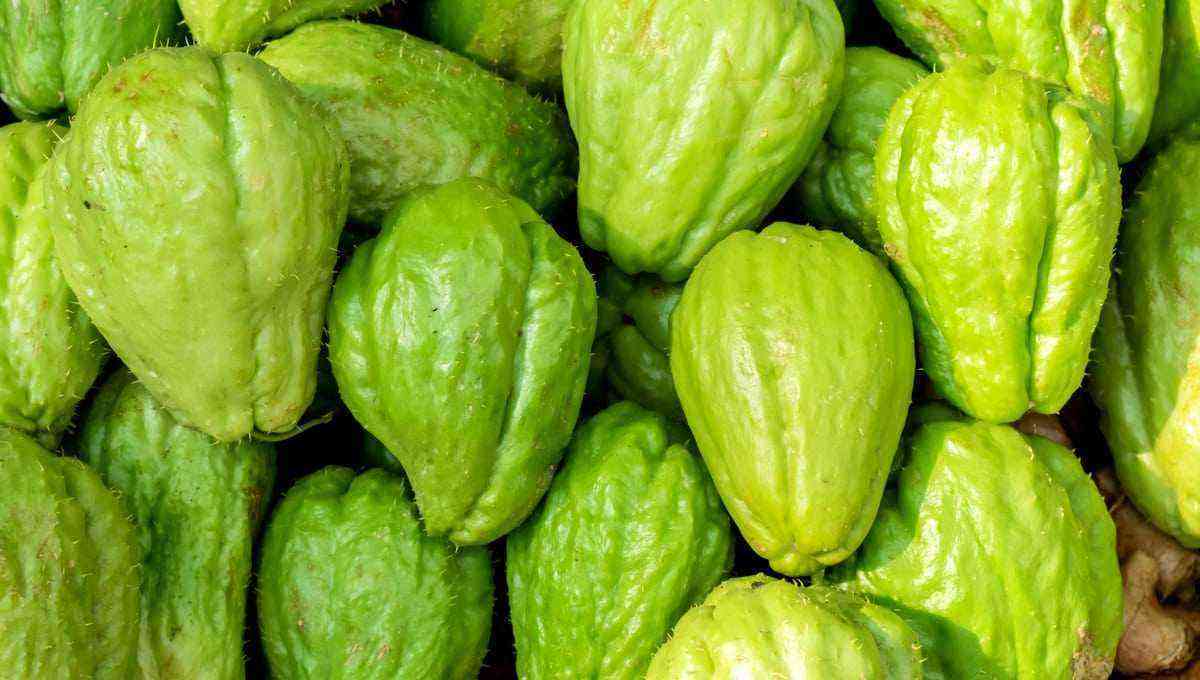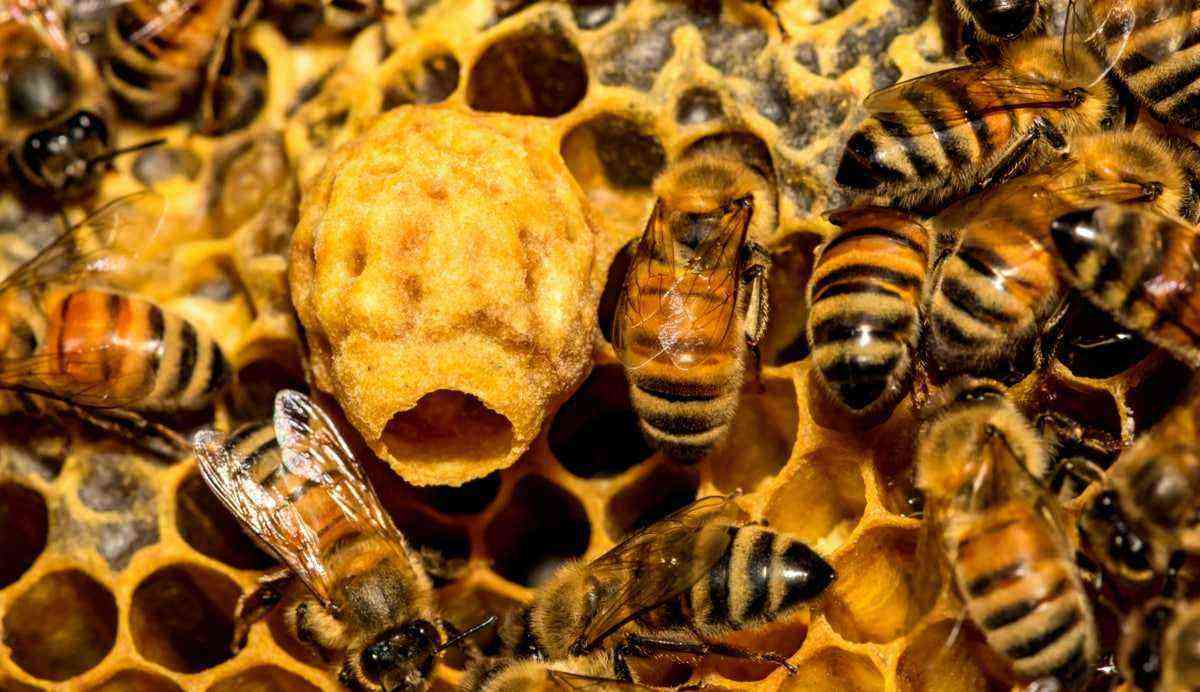Frost on coffee has already caused great damage to Brazilian coffee growers. The main one was in July 1975, in Paraná, and burned almost all the crops at the time. Coffee was the state’s main agricultural product at the time.
With each winter approaching, the concern is once again great, since the culture is very sensitive to extremely low temperatures and a new frost can bring many economic losses.
In this article, we are going to talk about the impacts of frost on coffee, because Brazil is a world reference when it comes to production and we are the largest exporter of the beverage in the world.
Are there ways to prevent frost damage to coffee? Read on and we will clarify these details.
Frost on the coffee: sad memories
Who doesn’t remember or at least heard dramatic reports about the “black frost” that hit the south of the country? It was on July 18, 1975 and burned almost all the coffee plantations in Paraná.
At the time, coffee was the main agricultural product of that state. In one year, 300 hectares of crops had to be eradicated, according to a survey carried out by the extinct IBC (Brazilian Coffee Institute).
However, it was not the only time that this climatic factor affected the crops. The phenomenon has already been recorded on other occasions in the states of São Paulo, Minas Gerais, Mato Grosso do Sul, Santa Catarina, Paraná as well as in Rio Grande do Sul.
This sensitivity is associated with the structure of the cell wall of coffee in such a way that, when frozen, it breaks quite easily. In fact, just the action of the cold is already a cause of the retardation of the plant’s growth.
No video below, check out the coffee frost of 1975, which in just one day caused great damage to crops in Paraná:
Source: Emerged Ferraz.
What are the impacts of frost on the coffee crop?
Frost is a natural phenomenon that causes plant tissue to freeze at low temperatures, especially below 0ºC. Therefore, this reaction can lead to the death of the plant or parts of it, such as leaves, branches, stem and fruits.
The frost can act in different ways, reaching only the external parts of the plant (coat frost) or affecting the trunk (frost cinnamon). In extreme situations, even burn the plant in its entirety.
In the case of coffee, leaf temperatures between -3ºC and -4ºC cause tissue death. In the trunk, death can occur from -2ºC. The plant dies as a result of the formation of ice in its intercellular spaces.

Coffee is a crop that is very sensitive to low temperatures and the damage is great with frost.
In this way, there is a risk of frost damaging the tissue in two ways: with the formation of ice crystals breaking the cell tissue or with the cell suffering from dehydration, due to the action of the ice.
Furthermore, it is important to note that frost damage is not caused solely by the freezing of the plant. Which means that many times there is not even the formation of ice on the surface and still the entire crop is destroyed.
On the other hand, there is the possibility that the entire plantation may be covered in ice, without any effect on the crop.
When do frosts occur?
Frosts usually occur during the coldest and driest months of the year, usually between June and early September. However, there are meteorological records that indicate that there is an approximate cycle of 9 to 11 years for the occurrence of stronger frosts.
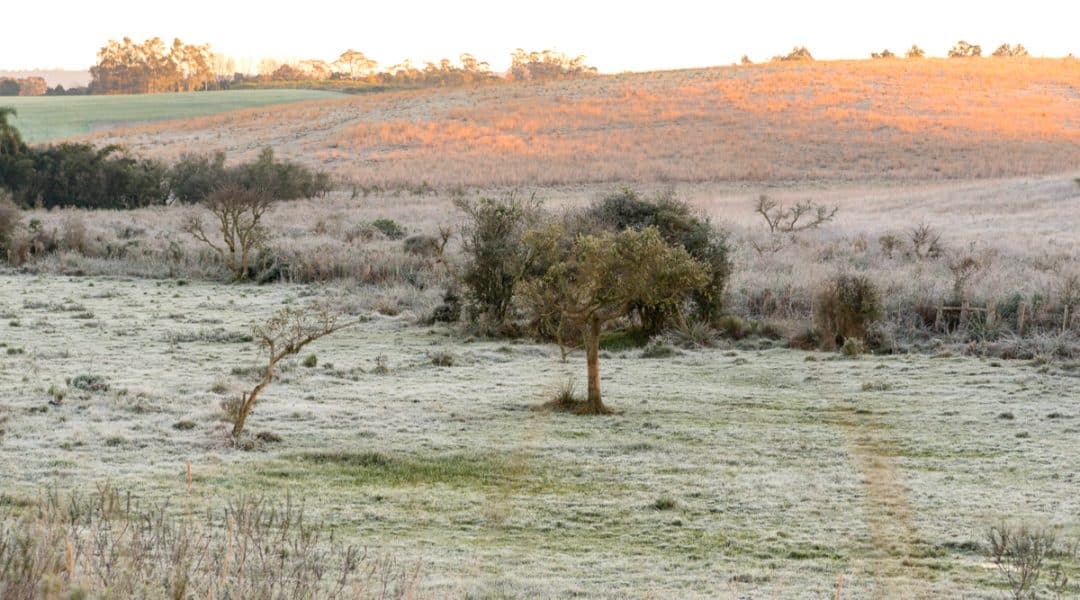
Winter dawn in the field with ice: common landscape in southern Brazil and risk of frost.
Some signs that a frost may occur are: clear skies, low air humidity, absence of winds, low temperatures during the day and especially a strong drop in temperature already in the early evening (approximately 1°C per hour or more).
In fact, many people believe that frosts tend to occur in the morning, when the first rays of the sun reach the vegetation, which leads to the melting of ice from the leaves and the “burning” of the plant.
However, this is nothing more than a myth, as the sun has no role in the process of crop damage after a frost.
How to prevent frost damage to coffee
As in almost all situations, prevention is the best way to prevent the coffee crop from being hit by frost. Below are some of the measures that can be taken:
– Choose, for planting, region no frost history in the last four years at least;
– Avoid the growth of tall, dense vegetation below the crop. In case it is not possible to remove all the vegetation, create corridors through which the flow of cold air is possible;
– Avoid using mulch e keep the farm clean in the most favorable periods of the year for frost. This measure will certainly leave the soil exposed to accumulate the sun’s heat during the day and keep it warm at night;
– In places prone to accumulation of cold air, plant sparse trees, if possible;
– Keep the crop well fertilized, especially with potassium;

The valleys, as well as “windbreaks” trees, help to avoid the action of cold winds.
– Keep valleys above the crop, in the most closed way possible, with dense and high forests, in order to avoid the action of cold air;
– Avoid vegetation above the crop, as it generates a lot of cold air.
– In open areas, the recommendation is plant “windbreaks” trees that help reduce the impacts of cold winds.
Coffee seedlings are more sensitive to frost
Coffee seedlings, because they are still fragile, run the risk of being the most affected in the event of frost.
Therefore, for those aged up to 6 months, after planting in the field, Embrapa technicians recommend the burial: they can be folded and covered with a thick layer of earth (15 to 20 cm), on the eve of the occurrence of frost.
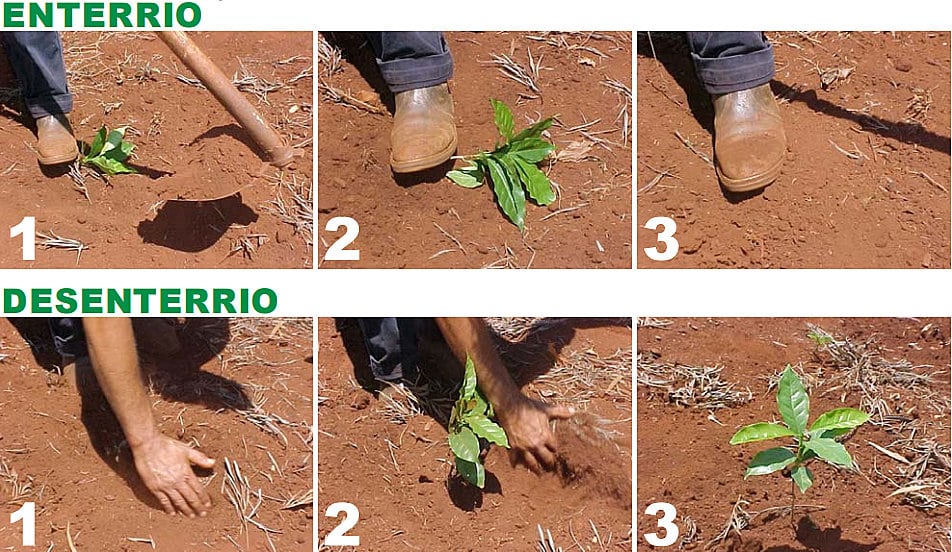
Burial technique helps protect seedlings from the effects of frost. Photos: Embrapa.
Past the frost alert, the plants must be discovered manually. Another tip is to cover the seedlings with straw that must be removed after the risk of frost has passed.
In cases where the frost has already affected the coffee crop, there is the possibility that the producer cuts the top of the plants, with the purpose of eliminating the burned parts and preserving the lower part, in an attempt to recover for the next harvest.
Unfortunately, in some cases pruning is not enough, as frost can affect the entire plant with no chance of recovery.
Conclusion
As you have noticed, the impacts of frost on the coffee crop can be very significant and prevention is the best way to avoid them.
Now that you know a little more about this subject, visit my article on how to grow coffee and enter agribusiness.
